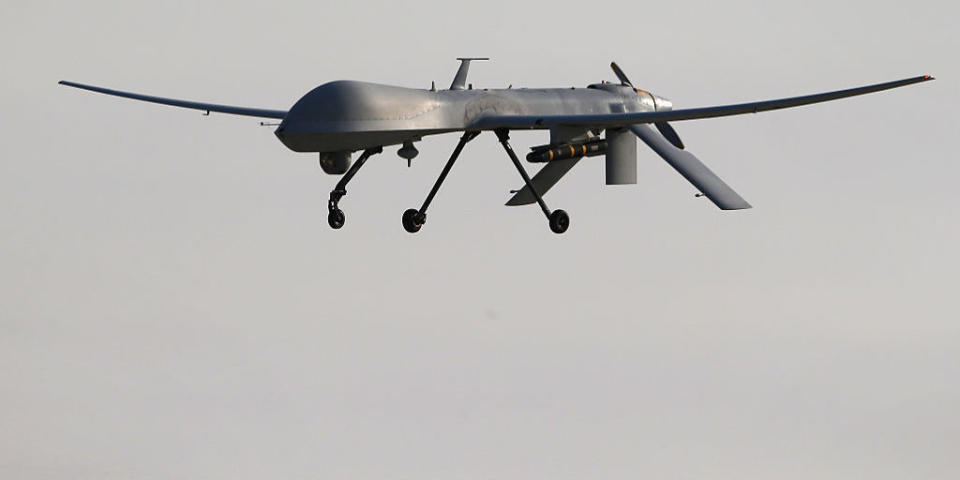The Predator Drone Is Going Into Retirement

The unmanned aerial vehicle that first put drones in the spotlight retiring. The MQ-1 Predator, which functioned as the eyes and ears of the United States military and intelligence community in the post 9/11 world is finally being put out to pasture. Defensetech reports that the deadline for phasing out the Predator is in early 2018, and most units plan to stop flying the strange-looking but iconic plane by summer this year.
The Predator doesn't look too intimidating if you don't know what it is. It has a bulbous head leading to a long, narrow fuselage and thin, broad wings. A pair of downward turned forked tail wings completes its ungainly, plucked bird look. A 115 horsepower engine drives a push propeller to a pokey cruising speed of just 84 miles an hour.

But the Predator delivered was precisely what the Pentagon and the CIA needed in the immediate post 9/11 world: persistence. The Predator could fly for up to 24 hours, circling in the sky for hours, waiting for its target. On faraway battlefields where distance and harsh conditions made surveillance difficult, the Predator was tireless, even if its pilots weren't.
Hand-in-hand with the Predator's long loiter capability was its electronics package. Inside the Predator's weird head was the AN/AAS-52 Multi-spectral Targeting System, which includes electro-optical cameras, an infrared camera and a laser designator. The AN/AAS-52 allowed controllers thousands of miles away to pick out and study targets on the ground. It also allowed the Predator to spot targets for other weapon platforms. The onboard laser designator could provide precision targeting for missiles such as Hellfire, Griffin and Paveway bombs.

Although U.S. Military operated drones for decades, the Predator was one of the first to carry weapons on a regular basis. Originally designed as an unarmed intelligence, surveillance and reconnaissance (ISR) asset, the Predator was modified by the Air Force in a 2000 crash program to carry up to two Hellfire missiles. This was later expanded to six smaller Griffin anti-tank missiles.
The Predator's ungainly but highly efficient design was even copied overseas. China's Wing Loong II bears a suspicious resemblance to the Predator, right down to the wingspan, but is thought to be less technically advanced under the hood.

Even after its retirement, the Predator's drone DNA will live on. The MQ-9 Reaper drone, a bigger, faster, more heavily-armed version of the Predator is replacing the older drone.
There's no word yet whether Air National Guard units, which traditionally use older equipment, will also make the transition or stick with the Predator. The intelligence community-specifically the CIA-may or may not still be using their Predators. U.S. Customs and Border Protection uses Predators to patrol the U.S.-Mexican border. The U.S. Army also operates the Predator-derived MQ-1C Gray Eagle, designed to provide reconnaissance and close air support to ground forces. The Predator might technically be retired but its legacy-for better or worse-lives on.
Related:
For more news videos visit Yahoo View, available now on iOS and Android.
You Might Also Like

